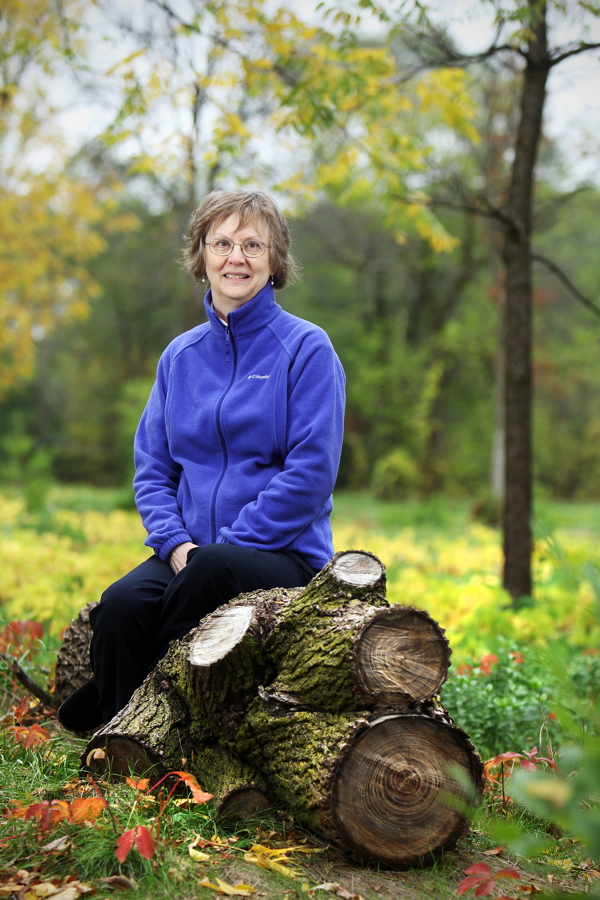Turning Pages, Turning Leaves
book melds poetry, natural science
Rob Reid, photos by Andrea Paulseth |

book is called Fiddleheads to Fir Trees:
Leaves in All Seasons.
Local author Joanne Linden describes her picture book, Fiddleheads to Fir Trees: Leaves in All Seasons, as a book for all ages, but especially for children. The inspiration for the book came to this former school teacher when she thought about how much kids pay attention to leaves in autumn, but not nearly as much the during the rest of the year.
The writing process took about 10 months. It wasn’t until she was done that Linden realized she had written a book about her childhood memories growing up in the small town of Kinney, on Minnesota’s Iron Range. She had a lot of freedom to explore the woods and waters near her home, and observing details in the outdoors was a special part of her life.
Each of the 14 poems is given its own double-page spread with beautiful illustrations and a sidebar of factual information. The format is a type of hybrid between poems and science instructional narrative. In fact, Linden isn’t sure where libraries should place this book: in the poetry section? With the science books? She herself calls it a work of “narrative nonfiction.”
The poems themselves are mostly free verse. There is one acrostic poem titled “Milkweed” where the letters of the title are arranged vertically and each letter in the eight-line poem begins a line describing the plant. Linden’s poem “Thistle” is a diamond poem with the first and last lines made of two words, the second and next-to-last lines made of four words, and so on. The poem “Balsam Fir,” reprinted here with permission of the author, is a concrete poem, a piece laid out in the shape of its subject.
The sidebars are designed to enhance each poem with nature-based facts. The poem “Poison Ivy” uses the phrase “as oily resins hitch a ride/with unsuspecting hikers brushing by.” The sidebar explains that the harmless looking leaves contain an oily substance that “causes a red, itchy rash on the skin of the unsuspecting victim.” The poem “Catalpa” includes the lines “Green seedpods/like slender beans/Dangle from the branches/And click-clack in the breeze.” The accompanying narrative explains that the seeds dry out and turn brown in the fall and make a click-clack sound as the wind bumps them against each other.
Linden was thrilled when an editor for Mountain Press Publishing Company in Missoula, Mont., sent her an email informing her they would publish the book. Mountain Press is mostly known for publishing roadside and flower identification guides. They held onto Linden’s manuscript for a whole year before giving it the green light. It is a new type of book for this particular company and they are currently promoting it through the national parks system. Linden suggested to her editor that they hire illustrator Laurie Caple of Rice Lake to do the artwork. Caple, who already has a sizeable list of accomplishments in the children’s publishing industry, contributed various components to the project. She added the presence of animals to this botany-driven book and arranged it in a seasonal, year-round format. Caple also included a Where’s Waldo-style feature in the book’s back matter. Young readers are instructed to go back and forth looking for the various mammals, insects, birds, fish, and reptiles and amphibians that appear in the illustrations.
Linden is on a roll with her writing. A new picture book titled Ben and Zip, Two Friends, is being published in the spring of 2014 by Flashlight Press based in Brooklyn, N.Y.
Fiddleheads to Fir Trees: Leaves in All Seasons is available from Volume One’s Local Store, Beaver Creek Reserve, and online bookstores such as Amazon. For more information, visit Joanne Linden at joanne-linden.com




















